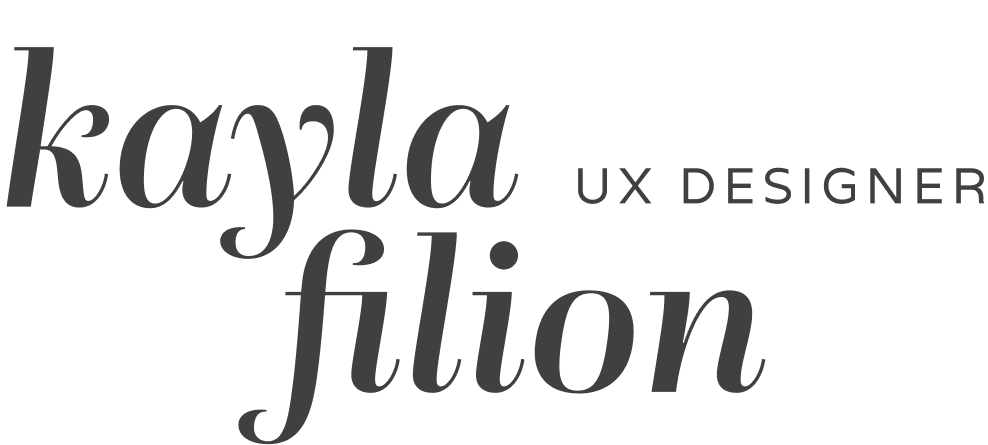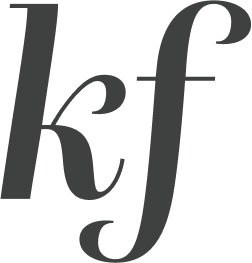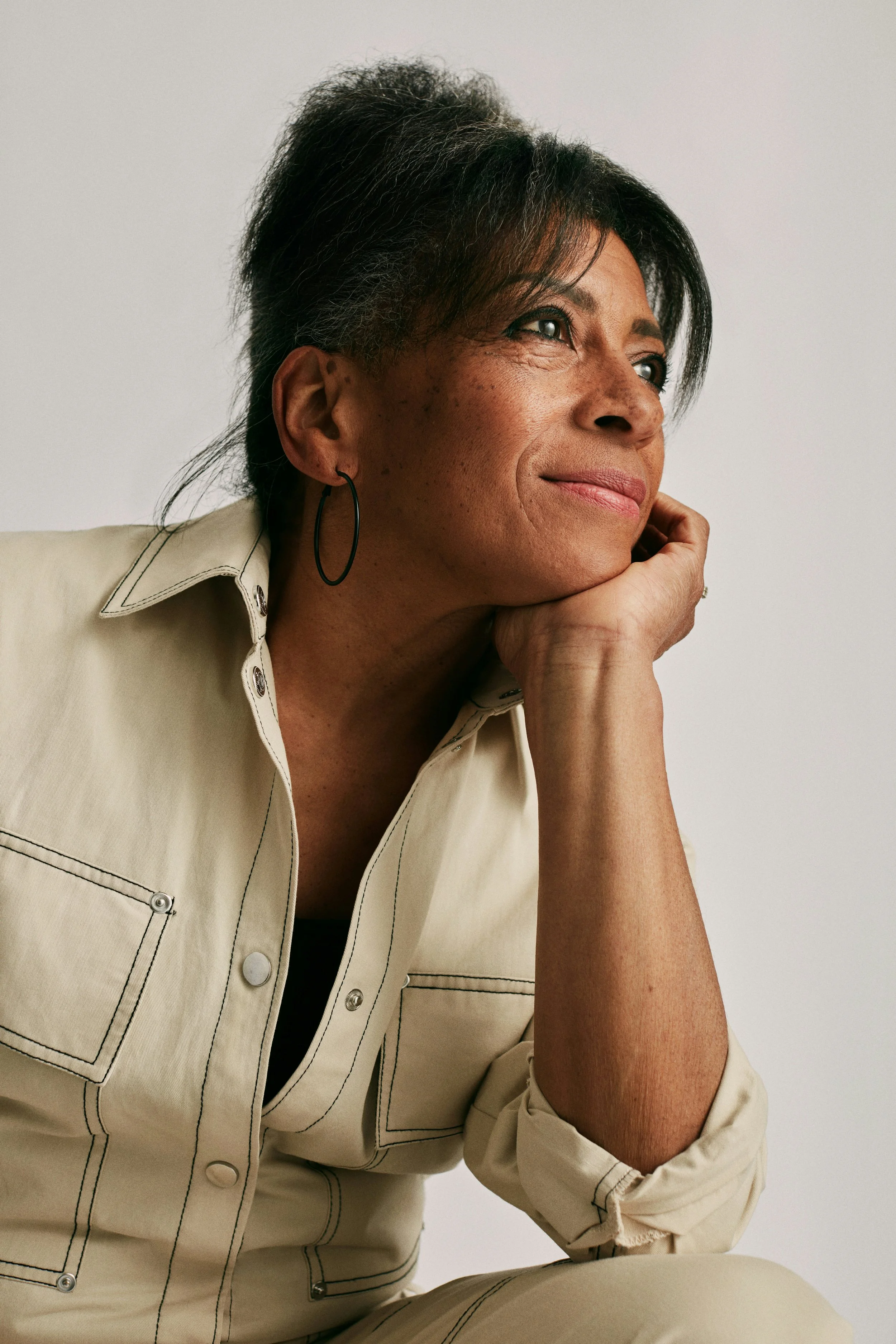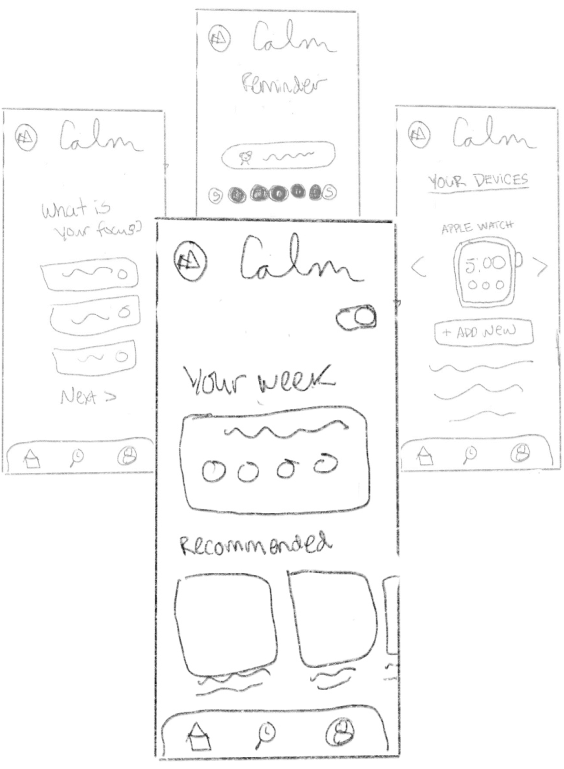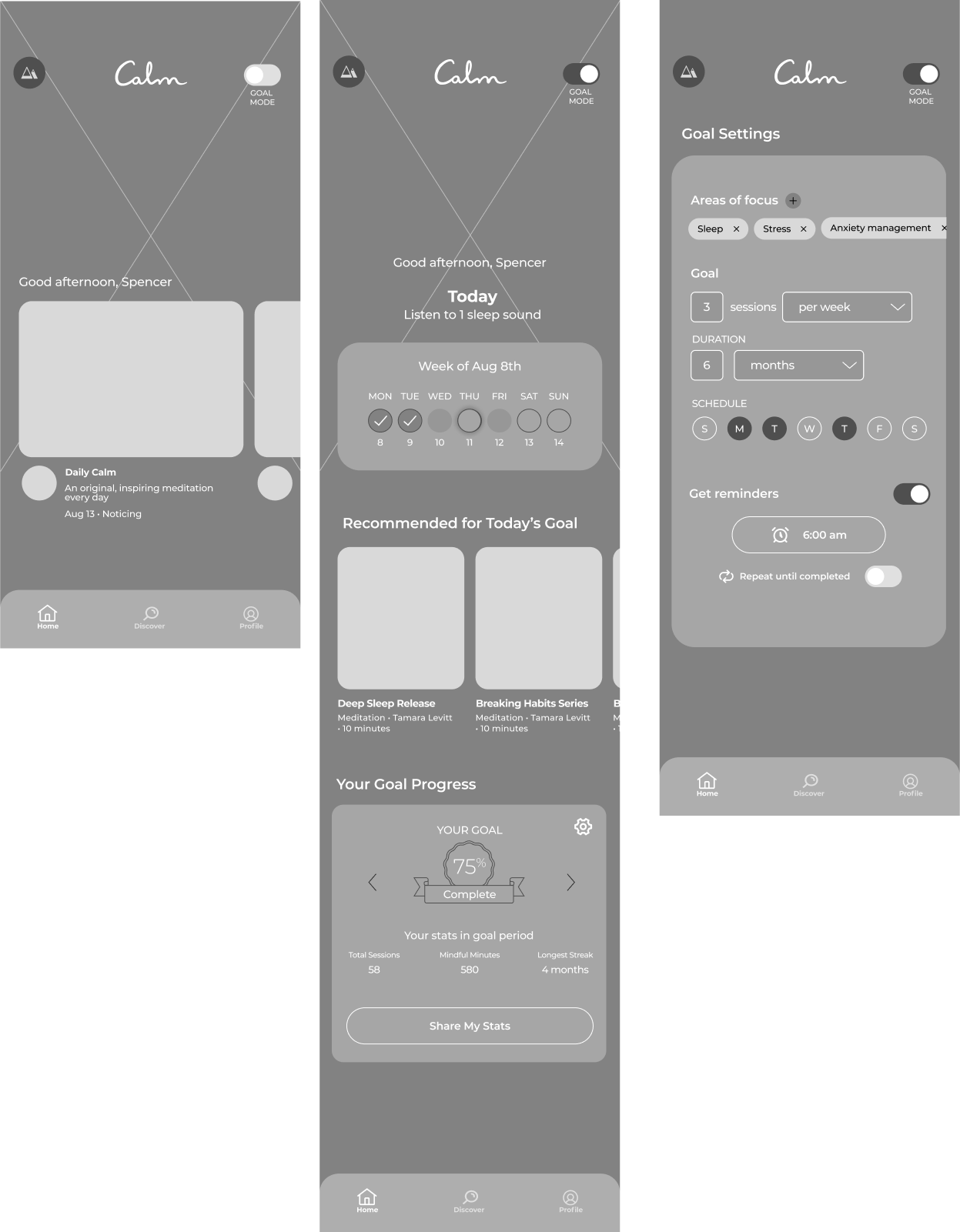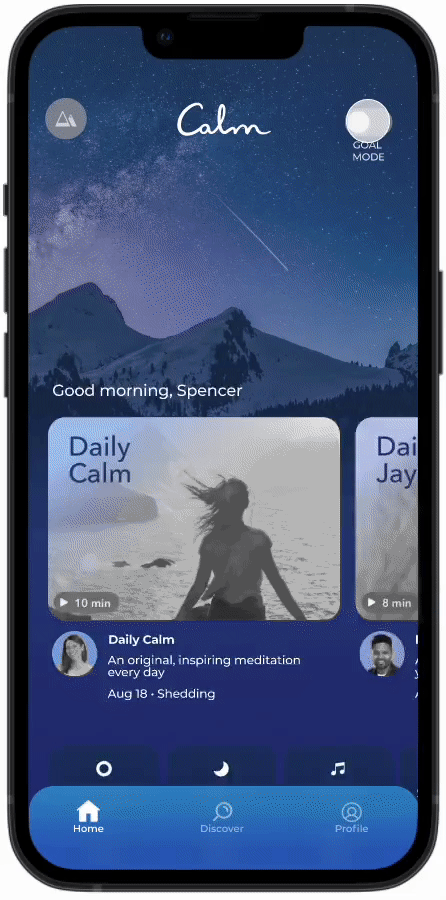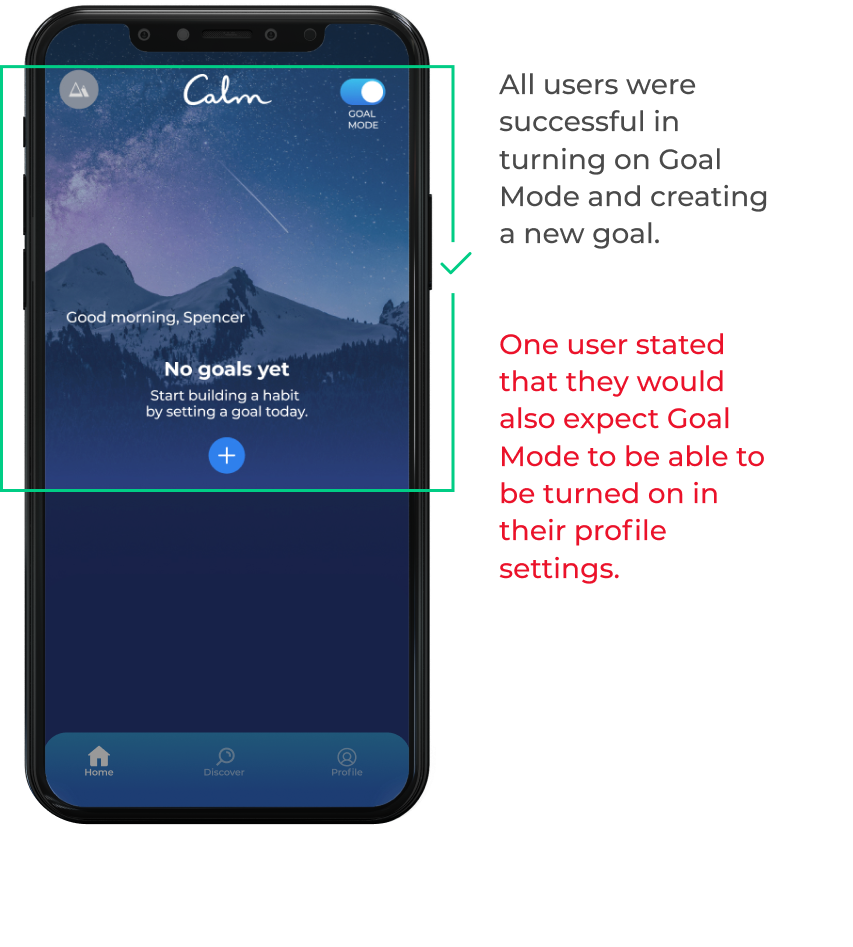Calm
Motivating users to reach their mental health, meditation and mindfulness goals.
ROLE Sole UX designer/researcher
TIMEFRAME 3 weeks
TOOLS Figma, FigJam, Zoom, Maze, Google Forms
CONTEXT Student project for UCLA Extension certificate program
UX RESEARCH | UX DESIGN
The problem
Calm is a mental fitness app that offers a wide range of features including guided meditations, soothing sleep stories, and calming music to assist users in effectively managing stress, reducing anxiety, improving sleep quality, and fostering a state of mindfulness.
Its users need a way to stay motivated to complete mindfulness sessions because they want to improve their mental health but find it difficult to maintain a consistent routine.
So, how might we assist users in developing a mindfulness habit to support their overall mental health?
The solution
Goal Mode transforms the user's home screen into a centralized hub exclusively dedicated to monitoring and managing their mindfulness goals.
Goal Mode
Set areas of focus
Custom reminders
Choose time period
Session recommendations to help complete goal
Set weekly schedule
Defining the problem
User interviews
In order to uncover users’ motivations, pain points, habits and needs, I conducted semi-structured user interviews on Zoom with 4 Calm app users. My questions were focused on their relationship with mindfulness/meditation, their overall experience using Calm and similar apps, what some of their pain points and frustrations were with the experience and how they interacted with the app.
Affinity mapping
I collected the insights I gathered from the user interviews and organized them into an affinity map. I categorized insights into positive (green), neutral (orange), and negative (red), which helps to give a clear overview of what the pain and gain points are.
Key insights from user research
Frustration with paywall and supplying payment information for free trial.
Users do not know where to begin with their mindfulness practice.
Users struggle with making meditation/mindfulness a habit in their daily routine.
Users found little incentive
to subscribe.
Most users navigated app by browsing but many didn’t know where to start.
Personas
Using the insights from all of my research, I created 2 main personas, each highlighting their goals and frustrations regarding meditation and Calm.
Sporadic Spencer
Spencer has enjoyed meditation for years but leads a very busy life and finds it difficult to make time for it.
-
To be more consistent with their meditation practice
To find a meditation routine that works with their changing schedule
To continue to improve their mindfulness skills
-
Starts using app but forgets about it or doesn’t feel like meditating when they get the reminder notification
Struggles to find time to meditate
Newbie Nora
Nora is new to mindfulness. Her therapist recommended that she try some meditation apps in order to manage her stress and anxiety.
-
To start a mindfulness practice in order to manage stress/anxiety
To find sessions that inspire her to want to continue meditation
-
Has downloaded multiple meditation apps but doesn’t know where to start
Frustrated by lack of guidance on meditation apps
Often forgets to meditate
Brainstorming & ideation
Solution sketching
During the ideation phase, I sketched out multiple potential solutions to address the problem identified by users. After careful consideration, I selected the solution that I deemed most effective in solving the user problem within the project's scope.
THE IDEA: A settings option in which the user can customize/set a specific goal based on their level and experience. The user can track the progress of their goal and also receive recommendations for the best sessions to complete their daily goal.
User flow
I created a user flow to map out the steps a potential user might take to manage their goal settings on the app.
Task: Spencer want to ensure that they get at least 3 sessions a week of mindfulness on the Calm app. They need to set up their ‘goal mode’ settings to reflect this goal.
Wireframes
I designed mid-fidelity wireframes to outline the structure and layout of the goal mode homepage. This process allowed me to visualize how the goal mode feature could be integrated into the existing user interface.
Prototyping, testing & iterating
High fidelity prototype
I developed a high-fidelity prototype in Figma to evaluate the functionality of the Goal Mode feature with users. The prototype includes interactive elements for each step of the goal-setting process within the app.
Using the prototype, the user should be able to:
Create a new goal
Browse recommended sessions
Complete daily goal
PAIN POINTS
Testers were confused by the weekly notification schedule defaulting to “everyday”
Some testers thought that there were not enough recommended sessions on the home page
Testers unfamiliar with the app wanted more guidance on what areas of focus would best suit their needs
User testing
During the initial phase of testing, I conducted a moderated remote and in-person usability test with 4 users. The objective of this testing was to evaluate the user experience by asking participants to create a new goal and complete a daily goal task.
GAIN POINTS
All testers said that the Goal Mode feature was something they would utilize
Testers found that the overall flow of Goal Mode was easy and intuitive to us
Iteration
After considering the insights gained from the research, I created iterations of the prototype based on the feedback I gathered. The changes implemented aimed to enhance the user experience and address the pain points identified during testing.
Additional testing
After completing the initial iterations, I conducted additional testing to gather further insights into the usability of Goal Mode and the impact of the design iterations. A total of 15 users participated in unmoderated usability testing on Maze.
The results revealed that users achieved a success rate of 87% in completing the tasks, 93% of the participants encountered no difficulties while completing the tasks, and 93% said that Goal Mode would be a feature they would utilize in the Calm app.
“I'm very goal-oriented, which means that having this feature would drive me to want to achieve better results.”
— User tester
Final thoughts
As this was a fictional school project, I did not have the resources to be able to test the business impact Goal Mode would have for the Calm app. However, below details the projected impact of the feature:
Continue to test iterations
Complete additional usability tests with updated prototype to gain further insights on the usability of the feature.
Explore creating a goal setting quiz that integrates with Goal Mode to help inexperienced users develop their goals.
